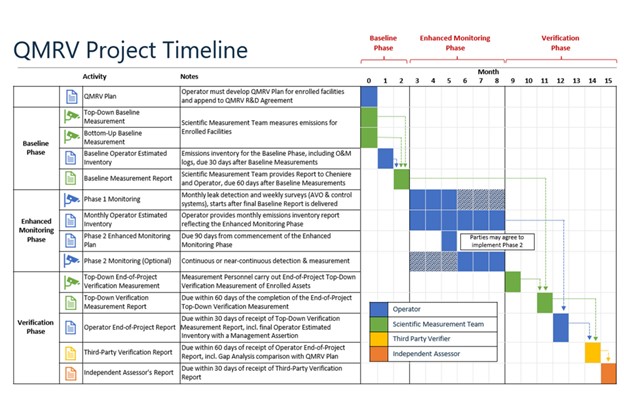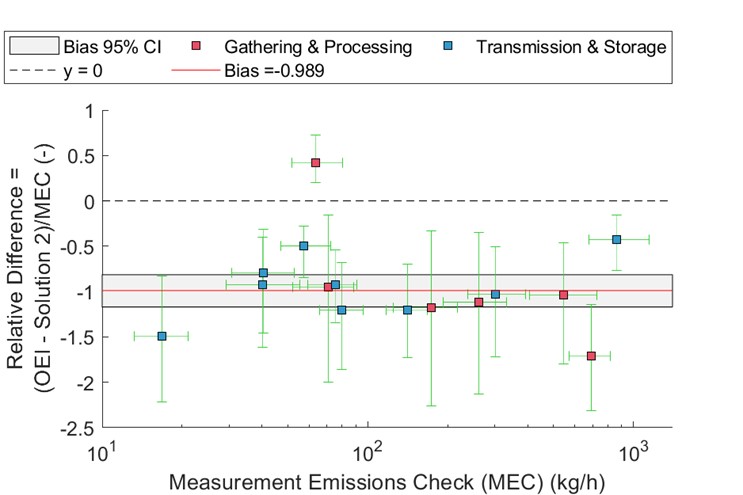QMRV

Midstream Quantification, Monitoring, Reporting and Verification (QMRV) Project Planning and Execution
Summary:
The Quantification, Monitoring, Reporting and Verification (QMRV) Project aims to produce an accurate representation of Cheniere’s (a major liquified natural gas (LNG) company) supply chain greenhouse gas emissions. The goal of this project is to improve emissions transparency, verify accuracy of reported emissions, and achieve emissions reductions. There are three phases of the project: A Baseline Phase, Enhanced Monitoring Phase, and a Verification Phase. The Baseline Phase will measure the total facility emissions using Top-Down (TD) (aerial and drone) and Bottom-Up (BU) (ground) technologies to compare against the Operator Estimated Inventory (OEI). The Enhanced Monitoring Phase the Operator will observe and estimate the emissions of the facility each month for 6-months. A measurement technology will come once a month to measure the site emissions. The Verification Phase will be two TD verification measurements of the full-facility emissions at the end of the project.
This study focused on full-facility estimates from TD methods at 15 midstream natural gas facilities in the U.S.A., and were compared with a contemporaneous daily inventory assembled by the facility operator, employing comprehensive inventory methods. CSU is working with SLR (the prime contractor), CSU role in the project is the Scientific Measurement Team – our role is to analyze and verify the data.
Objectives:
- Reduce emissions across the supply chain, verify accuracy of reported emissions and improve emission transparency;
- Understand and quantify the emissions from a small select set of enrolled facilities from midstream participants;
- Demonstrate the effectiveness and limitations of the deployed total site rate quantification methods (two total site aerial measurements);
- Compare the company inventory to the total site measurements. These should also be informed by other data, such as collected stack testing data provided by the participants;
- Review results of the selected enhanced monitoring technologies that participants deployed on their midstream facilities (in a monthly review and reconciliation);
- Produce measurement informed inventories (MII) methods using multi-scale measurements. This will keep inventories up to date and create a more defensible inventory.
Project Plan:

Schedule:

Results:
In the baseline phase, the following results were determined: between the two TD measurement methods, there was a 31% difference in the mean over 15 facilities.

The TD estimates are 68-99% larger than the OEI. Only 2 of 15 facilities were ‘close match’ to at least one TD method.


Publication link updates –
Jenna A. Brown, Matthew R. Harrison, Tecle Rufael, Selina A. Roman-White, Gregory B. Ross, Fiji C. George, and Daniel Zimmerle (PDF)
Funding Provided by:
Cheniere Energy
Collaborators:
SLR, Cheniere, several other midstream companies
Project overview:
